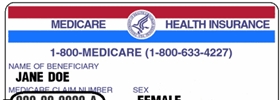The only thing that is certain in regards to Medicare and Medigap insurance is change. Each year, deductible amounts, premiums, coverage, etc. all change on both “original” Medicare (Parts A & B), Part D (Rx coverage) and Medigap plans. Add to that the changing marketplace for medical insurance in general, and you have a lot to keep up with.
We’ve put together a rundown of some of the changes/trends we see today, in early 2016, which may be helpful.
- First of all, the Medicare Part B premium has changed for people who are “aging in” to Medicare in 2016. In most cases, if you already had Part B, you get the benefit of the “hold harmless” provision, which keeps your Part B premiums at the same level as they were in 2015. But for new beneficiaries in 2016, the premium is $121.80/month.
- The average Part D premiums for 2016 increased to $41.46 (up 13% from 2015 numbers!). Of course, with Part D, you have to look at the whole picture of how a plan covers your medications. But still, this change is significant. Approximately 83% of people are paying more for Part D in 2016 than they did in 2015.
- There are fewer Part D plans available. Part D options peaked at an average of 55 per state in 2007. Since that time, the number of available options for Part D in each state has steadily declined. Currently, there are an average of 26 plans in each state. Fewer options means less competition.
- Likewise, there are fewer Medicare Advantage choices. In some areas of the country, they are down to 1-2 companies offering plans. This, coupled with lower reimbursement rates (the Federal government pays these plans) has further reduced the benefits offered by these plans. This is a trend we would expect to continue and possibly expand in the next couple of years.
- More companies are entering the Medigap marketplace. Last year, in 2015, there were 3-4 large insurance companies that began a foray into the Medicare Supplement market. Some were more successful than others, but overall, this greater level of competition in most areas has led to increased price competition and lower (compared to past years) rate increase percentages.
- Plans G and N are grabbing a larger portion of the Medigap market share. Plan G rates, in particular, have been more stable than ‘F’ rates in recent years, so although the Part B deductible (which ‘G’ doesn’t cover) has gone up, Plan G continues to attract more customers.
- More and more Medigap companies are offering a husband-wife discount, and many companies are expanding that to be a household discount, available even if both spouses do not have a plan with the same company.
- The “donut hole”, or coverage gap, for Medicare Part D continues to reduce in size. As part of the ACA legislation, the Medicare “donut hole” is being reduced each year, leading up to its eventual elimination in 2020.
- The number of doctors that are accepting Medicare patients has seemed to stabilize, according to a Kaiser Family Foundation study. This may/may not be attributable to the recent “doc fix” legislation, which was passed in April to avoid a proposed 21% cut in doctor reimbursement rates.
If you have questions about any of this information or want to speak with someone directly, you can call us at 877.506.3378 or reach out to us online on our Facebook page or Contact Form.
_______________________________
Garrett Ball is the owner/president of Secure Medicare Solutions, Inc, a leading, independent Medicare insurance brokerage. We are licensed in 43 states and have helped thousands of Medicare beneficiaries navigate the Medicare maze over the last 8 years.





